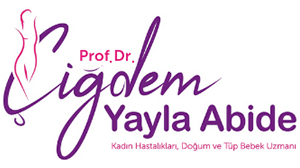In vitro fertilization treatment, which is used by couples who cannot have a baby by natural methods due to many reasons such as infertility, advanced age, infection, blockage in the tubes, azoospermia, continues to achieve surprising success. Gynecology and Obstetrics Specialist Assoc. Dr. Çiğdem Yayla Abide underlines that many couples today still have some misinformation about in vitro fertilization. While correct mistakes are sometimes the reason why couples do not resort to in vitro fertilization, they can sometimes lead to undesirable failures in the treatment process.
In vitro fertilization treatment is among the frequently used reproductive methods, especially in recent years, due to genetic or external factors. However, the misconceptions about in vitro fertilization are still one of the biggest obstacles to treatment. Gynecology and Obstetrics Specialist Assoc. Dr. Çiğdem Yayla Abide lists the common mistakes that are frequently encountered and cause undesirable failures as follows;
1- FALSE: “Infertility is caused by women”
Although the frequency of infertility varies from country to country, it is seen in almost one in every 6 adults, according to World Health Organization data. Infertility problem can be caused by both men and women. When we look at the infertility rates in men and women today, it is possible to say that these rates are almost equal. Both spouses should be examined, tested, and treated if necessary.
2- FALSE: “In vitro fertilization is the last treatment method”
In vitro fertilization is the first and only option in some cases. In cases where both tubes are closed in women, severe male infertility (Azospermia), consanguineous marriages, and genetic disease predisposition, in vitro fertilization is the first option.
3- MYTH: “In vitro fertilization always results in multiple pregnancy.”
The restriction on the number of embryos transferred also reduces the rate of multiple pregnancy. In the past, allowing the number of embryo transfers and not applying the ovarian freezing method could lead to multiple pregnancies. Nowadays, especially in young women, in vitro fertilization method can result in a singleton pregnancy rate.
4- MYTH: “Normal birth cannot occur with in vitro fertilization.”
In vitro fertilization does not affect the method of birth. The process is observed just like in a normal pregnancy, and the birth method that is healthy for the mother and the baby is chosen.
5- MYTH: “In vitro fertilization can only be tried a few times”
If there are sufficient ovarian and there are no problems with embryo development, in vitro fertilization can continue to be tried. There are also patients who became pregnant on their sixth or seventh in vitro fertilization treatment attempt.
6- FALSE: “Traveling is prohibited after embryo transfer.”
Traveling by plane, bus or car after embryo transfer does not affect the chance of pregnancy. One of the misinformation on this subject is that you should remain inactive for a few days after the transfer. Resting, lying down, or remaining still after embryo transfer does not affect the chance of pregnancy. After the transfer, it is necessary to return to routine life quickly.
7- FALSE: “Embryo transfer is a painful procedure.”
No pain is felt during embryo transfer, this rate is almost 98 percent. Very rarely, vaginal sensitivity may be observed in some patients.
Magazine in which the article was published: Parents Magazine







